5 Tiny Habits That Produce Gigantic Results
Leading systems and people can seem so overwhelming.
However, leadership is typically more straightforward than it appears.
In many ways, Higher Performance leaders master some fundamental habits that other people miss. The advice in this post is so simple that you might think, “this is so basic, Joe.”
Maybe that’s the point.
I know dozens of leaders with advanced degrees in leadership who read everything on the topic and are still relatively ineffective.

I know just as many leaders with little formal education but lead powerfully and effectively day in and day out.
Often, these leaders gain influence because they’ve mastered a few basic skills others miss.
Here are 5 of my absolute favorite basic leadership skills that are far too easy to overlook.
Make them habits, and you’ll become an irresistible leader everyone will want to follow.
1. Make Heroes
How healthy is your relationship with yourself?
Who comes to mind when I say the word, narcissist?
Insecure people focus on themselves because they can’t bear to give anyone else the spotlight.
Leaders who lack confidence can end up being selfish. Their lack of self-esteem means no one else gets attention.
How do you escape the trap of narcissism, insecurity, or low self-confidence?
Make someone else the hero.
If you’re a campus or district leader, make sure you point to your mission, not to yourself, when you speak. Worry more about whether people connect with your purpose than whether they connect with you.
What else does this principle look like?
If you’re a writer, make your reader the hero. The filter through which I try to run every post I write is what I call a “useful” filter. I want the post to help you as a reader. I want you to win.
Think about it. You and I love leaders who point beyond themselves to someone else. Why not be that leader?
So, when you struggle with that inner pull toward narcissism, insecurity, or low self-confidence, step aside and make someone else the hero.
It works and elevates your cachet with others… who might eventually see YOU as their hero.
2. Promise your Promises
If there’s one piece of advice I want my adult children to remember (other than MAKE MORE HUMANS), it’s this: Do what you say you’re going to do when you say you’re going to do it.
It puts you ahead of about 99% of others on the planet.
Think back on your last week. Who frustrated you most?
Probably the people who didn’t do what they said they would do when they said they would do it, right?
Now envision the people you are most likely to promote, reward, or even want to hang out with.
It’s obvious. The people who do what they say they’re going to do when they say they’re going to do it.
Doing what you said you would do when you said you would do it is the basis of trust. It’s also the basis for building stronger influence with your people.
What do you do if you struggle in this area?
Easy. Just stop promising and start delivering, then reintroduce your talk when your walk catches up to what you want to promise others.
The Time To Optimize Your Campus Performance Is Now
The Lead Team Institute {LTI} is a step-by-step framework for Optimizing Higher Team Performance (when gravitational pull toward average is working against you).
{LTI} is a complete program of workshops, tools, coaching, and strategies that will equip you to drive Higher Team and System Performance.
3. Use Results-Based Leadership
I’m sick, and you are dog-tired watching team meeting - after meeting (keep going) focused on process, not outcomes.
The “how” of methods seems to be why your work calendar is populated by back-to-back-to-back meetings that swirl in activity but absent productivity.
I realize it’s cliché’ these days to say the journey is more important than the destination. But not always.
Let’s get serious. What fun is the journey if you end up with more “to dos” than “to done?”
It’s furiously frustrating when your weekly check-in with your leaders on the tasks for the week produces the same old song and wiggle:
- Well, I emailed him.
- She never got back to me.
- I’ve called five times.
- I think they must be on vacation or something.
And you try to understand that they FEEL like the project is complete because they tried.
Nope: Trying isn’t the same as doing.
Don’t you want to say, “STOP!” I’m asking you if it is done?“
A year ago, the HPG team was starting to drift in this common (average) direction, and we made an intentional pivot to stop focusing on the process and start focusing on outcomes.
When you focus on outcomes, you set yourself (and your team) up for success. Instead of running endlessly to track where people are at in the process of initiatives, you learn the two-step dance.
- Step #1 – Set the outcome and the timeline
- Step #2 – Expect and account for the on-time and quality delivery of that outcome
If you focus on outcomes, you’ll also have a shot at mastering point #2 above.
Promising your promises and GSD (getting s#$% done) makes the journey much more enjoyable for your high-capacity, A-Team players.
A non-results culture is the perfect habitat for average leaders and teams to reproduce like rabbits.
4. Look In, Not Just At
Have you noticed how hard it is to look someone in the eye—to make them the sole focus of your attention?
I’m pretty sure I have undiagnosed attention issues, and it’s tough to stay focused on people and ignore the adjacent noise or anything else in the room (or my phone at the moment).
It’s common, and it leads to average performance.
Higher Performance leaders manage against these common tendencies and always look the other in the eye.
One of the anchoring behaviors I am working to make a habit is this. When I’m in a conversation with someone, I’ll create a voice in my head that keeps repeating, “Look them in the eye…look them in the eye.”
It sounds so elementary, but it helps.
I’ll even position myself in a remote Zoom meeting to face a blank wall. Otherwise, I instinctively glance at whatever is moving about me.
Watch for it…the very best leaders look you in the eye and make you the sole focus of their attention.
Practice that this week.
5. Smile
Everyone has a default expression. It’s hard to know what yours is because you never see yourself as others see you.
I learned years ago that my default facial expression is…intensity. I apparently forgot to tell my face if I'm having a good time.
I’m also a fast walker and appear to be bucking a fierce wind in my face on my way to any meeting.
People (who love me) have given me constructive advice, such as “try strolling across the room and pretending you are talking with a small child.
I know that’s so basic, but remember, you’re programming against your default here, so it’s not easy.
I must remind myself to smile when I teach, to smile when I greet people, and to smile in conversations.
It makes a huge difference.
Michael Hyatt has a similar issue and, in this post, outlined five positive impacts of smiling more as a leader.
Smile!
You deserve to stop scurrying in confusion and busyness.
Reclaim Your Momentum {LIVE}
✅ Reclaim Your Time
✅ Reclaim Your Energy
✅ Reclaim Your Priorities
”Wow! I didn’t realize I was in desperate need of this talk and these tools in my life.”
“This message so profoundly impacted us. We are now beginning to edit out the unhealthy team behaviors interfering with our performance.
“The timing of this message could not have been better for the health of our team.”
Without a new strategy and approach, it's easy to continue to:
➜ Sacrifice self and family on the altar of work
➜ Overcommit and underdeliver
➜ Be busy but no longer brilliant.
➜ Juggle more priorities than what we can complete.
Worst of all, other people — other tasks, jobs, and projects — will continue to hijack your life.
It’s time to change that by implementing a strategy that works.
Reclaim Your Momentum {LIVE} is a two-hour keynote for campus/district leaders and their teams.
This interactive session will inspire, challenge, and equip your team to accelerate healthy team culture and overall team performance.
Your team will leave this session with the following:
- A shaper clarity of your unique leadership superpower we call your Natural Leadership Profile
- A callable framework for building Higher Performance team and culture
- Practical tools to accelerate team communication, connection, alignment, capacity, and execution
Book Your Team Retreat Today – Here.
More Blog Articles


PO Box 80
Stillwater, MN 55082
info@higherperformancegroup.com
LinkedIn : Dr. Joe Hill
Instagram: @higherperformancegroup
YouTube : Higher Performance Group
All Rights Reserved | Higher Performance Group | Privacy Policy

